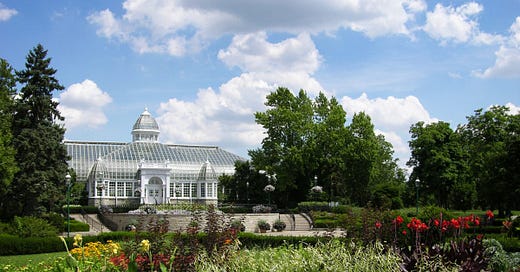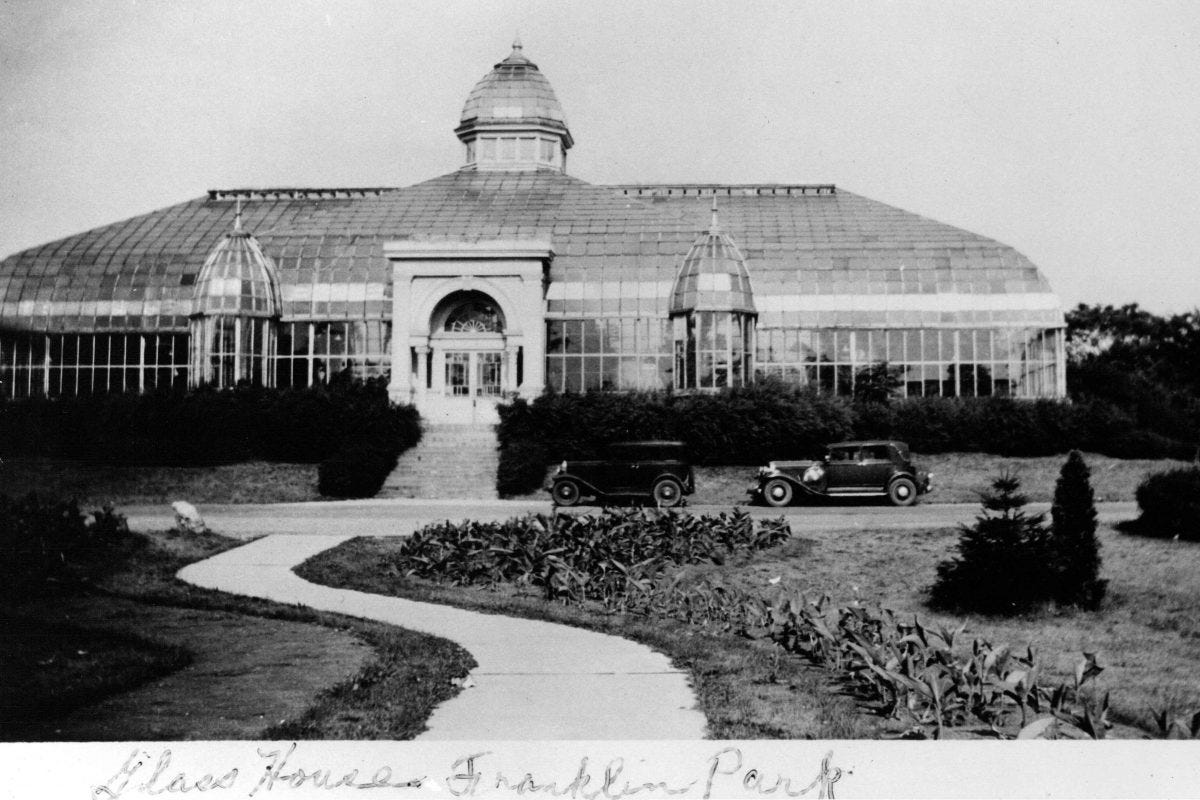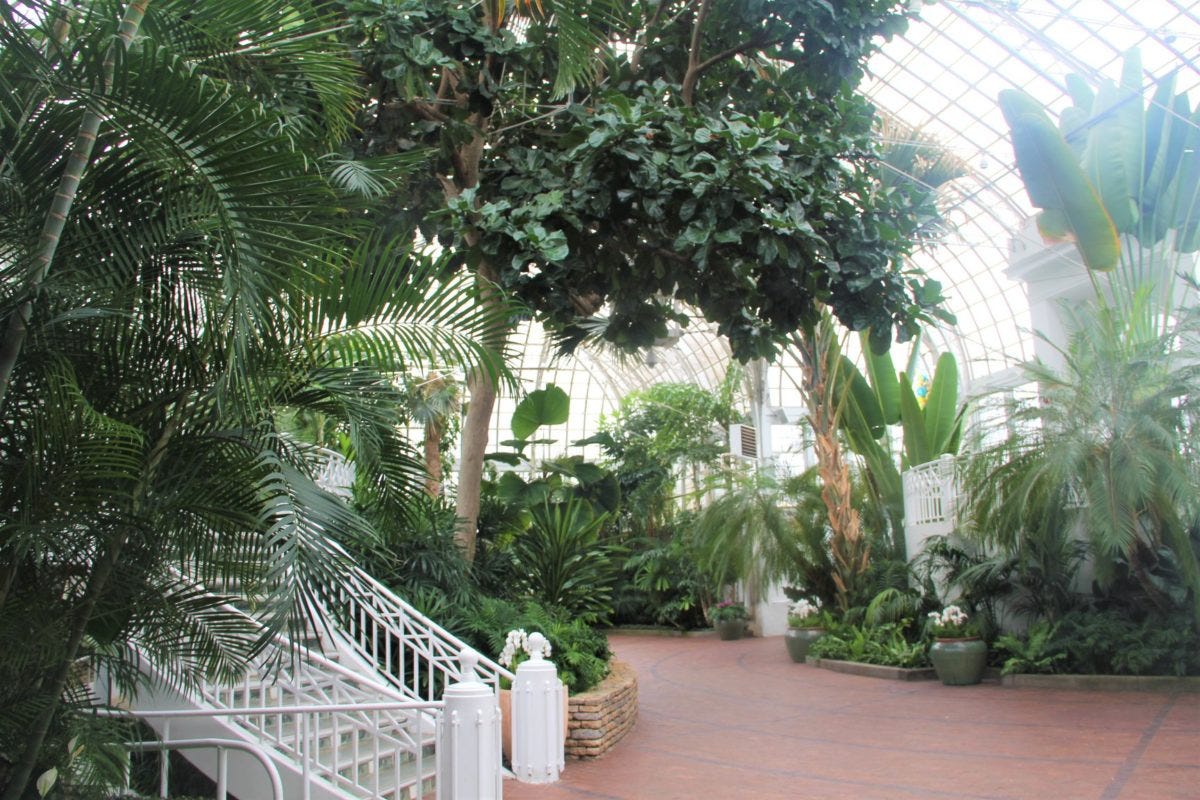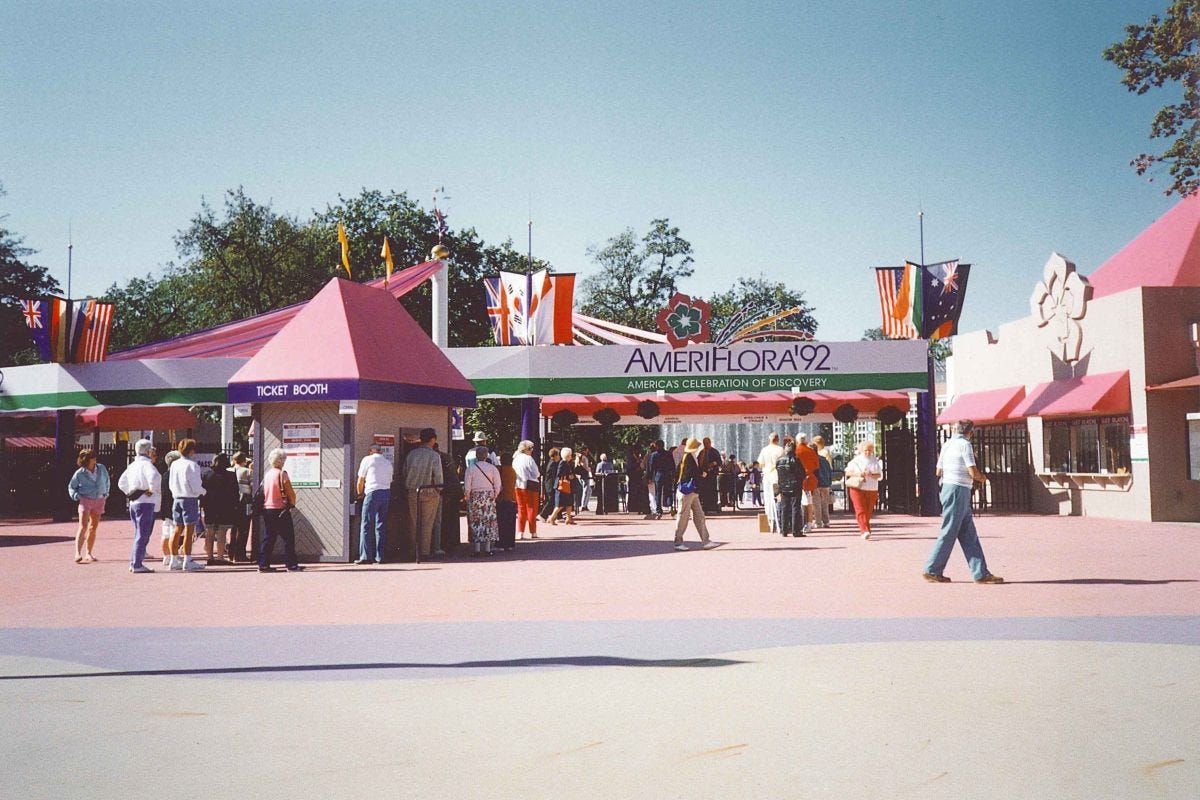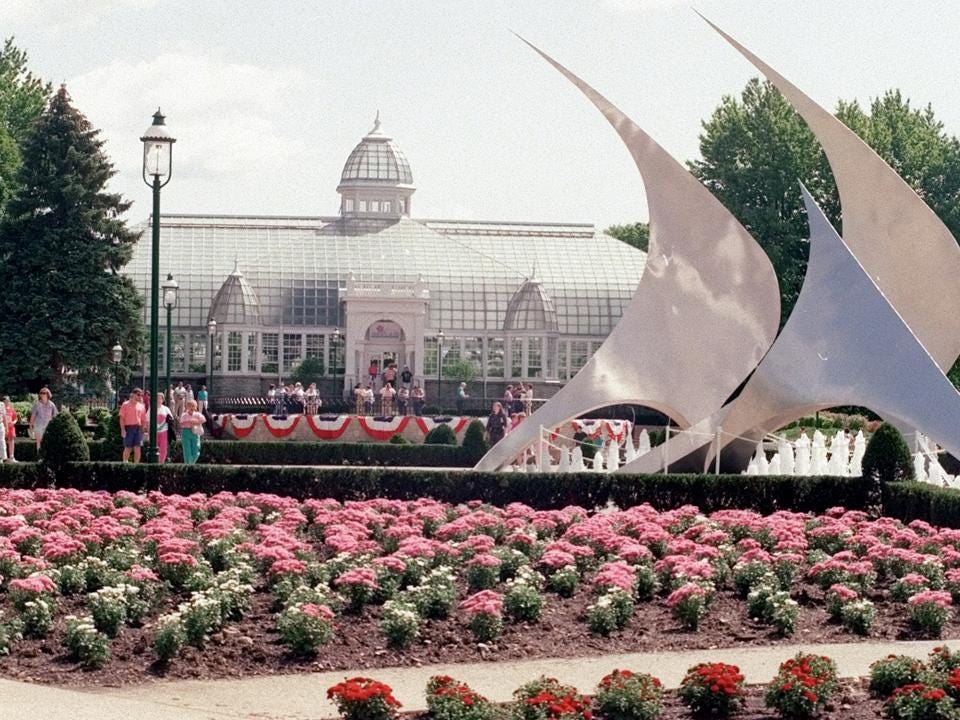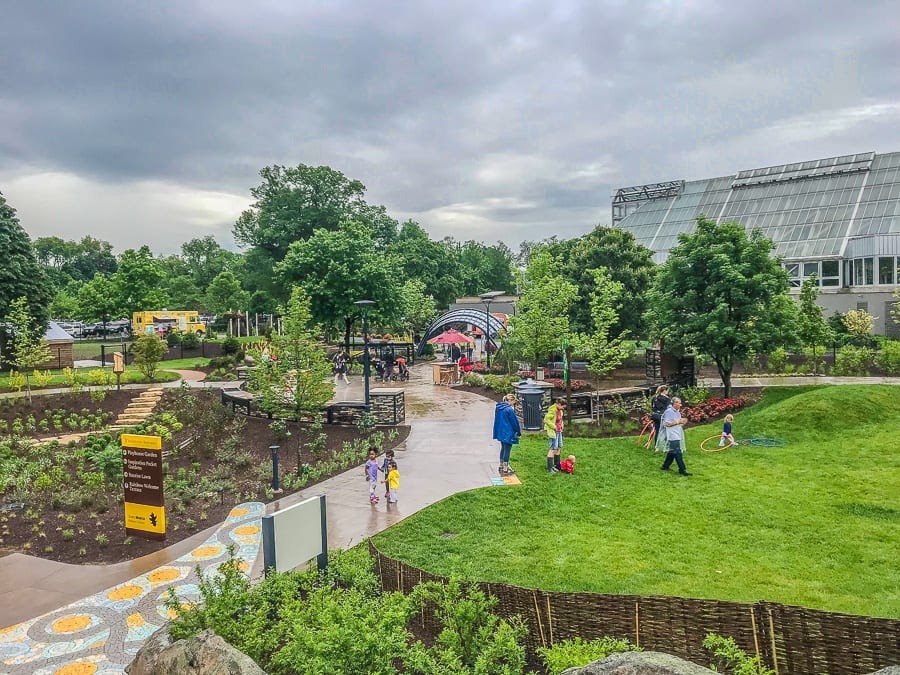A Timeline of Franklin Park Conservatory and Botanical Gardens
Read through the history of one of Columbus’ biggest cultural staples, and find out why it’s so important to the city.
Nestled in the heart of Columbus, the Franklin Park Conservatory and Botanical Gardens stand as a testament to the city’s dedication to culture, nature, and community. From its modest beginnings as a public green space to its status as a world-class destination, the conservatory has undergone remarkable transformations, offering visitors a harmonious blend of history, horticulture, and art.
The Beginnings of Franklin Park
The story begins in 1852, when the city of Columbus established Franklin Park as a 93-acre public green space. Designed to serve the recreational needs of the growing city, the park quickly became a beloved gathering place for residents seeking respite from the urban environment. Its open fields, mature trees, and serene atmosphere made it an oasis in the bustling city.
By the late 19th century, global movements celebrating botanical exploration and horticultural innovation began influencing cities across America. Inspired by the success of grand exhibitions like London’s Crystal Palace and Chicago’s Columbian Exposition, Columbus leaders envisioned a glass conservatory to showcase exotic plants and demonstrate the city’s cultural and scientific ambitions. Franklin Park, already a popular civic centerpiece, was the ideal location.
The Birth of the Palm House (1895)
In 1893, Franklin Park hosted the Ohio State Fair, drawing thousands of visitors and reinforcing its reputation as a community hub. The fair’s success sparked the decision to build a conservatory modeled after the elegant Victorian-era glasshouses popular in Europe.
Two years later, in 1895, the Palm House was completed. Constructed with steel and glass, the Palm House embodied the era’s fascination with industrial innovation and botanical wonders. It housed an impressive collection of tropical plants, offering visitors an opportunity to explore distant ecosystems without leaving Columbus. The conservatory quickly became a symbol of the city’s progress and creativity.
Challenges in the Early 20th Century
While the Palm House enjoyed early success, the conservatory faced significant challenges in the decades that followed. Financial constraints, limited resources, and the economic downturns of the 1930s left the building and its collections in need of care. Despite these struggles, Franklin Park remained a vital green space for the community, offering solace during times of hardship.
In 1974, the conservatory was officially listed on the National Register of Historic Places, ensuring its historical significance would be recognized and preserved. The designation also set the stage for future revitalization efforts.
Revival and Expansion (1980s-1990s)
The conservatory began its transformation in the 1980s, thanks to renewed interest from city leaders and community advocates. Recognizing its potential as a cultural institution, a $14 million renovation project was launched to restore the Palm House and expand the conservatory.
Completed in 1989, the revamped conservatory included the addition of multiple biomes designed to replicate ecosystems from around the globe:
The Tropical Rainforest, teeming with lush greenery and exotic blooms.
The Desert, showcasing the hardy plants of arid regions.
The Himalayan Mountain, featuring plants from high-altitude environments.
The Pacific Island Water Garden, a serene space with waterfalls and pools, later home to the conservatory’s iconic butterfly exhibitions.
These enhancements elevated the conservatory’s profile, turning it into a premier destination for both locals and tourists.
AmeriFlora ‘92: A Defining Moment
In 1992, Franklin Park hosted AmeriFlora '92, an international floral and garden exposition celebrating Columbus’ bicentennial. The event brought international attention to Franklin Park and the conservatory, drawing over five million visitors from around the world.
AmeriFlora left a lasting legacy, funding major improvements to the conservatory’s gardens and infrastructure. Enhanced landscapes, new features, and greater visibility positioned the conservatory as a leader in botanical and cultural programming.
Chihuly at the Conservatory (1999)
The late 1990s marked another milestone with the debut of Dale Chihuly’s Chihuly at the Conservatory exhibition. The world-renowned glass artist’s vibrant, intricate installations blended seamlessly with the plant displays, creating an immersive and unforgettable experience.
The exhibition’s overwhelming success led to the permanent installation of over 20 Chihuly pieces throughout the conservatory. These stunning works became an integral part of the conservatory’s identity, attracting art lovers and horticulture enthusiasts alike.
The 21st Century: Growth and Innovation
In 2008, the institution rebranded as the Franklin Park Conservatory and Botanical Gardens, reflecting its expanded focus on outdoor spaces and educational initiatives. The conservatory continued to grow, launching major projects that deepened its connection to the community:
Community Garden Campus (2011): A space dedicated to urban agriculture, sustainability education, and hands-on gardening workshops.
Scotts Miracle-Gro Foundation Children’s Garden (2018): This 2-acre interactive garden encourages children to explore nature through play, featuring water features, treehouses, and educational exhibits.
Seasonal events became central to the conservatory’s identity, with highlights like Conservatory Aglow, an annual holiday light display, and the Butterfly Exhibition, where visitors can observe live tropical butterflies in a stunning rainforest setting.
Adapting to the 2020s
The conservatory faced new challenges during the COVID-19 pandemic but remained a vital community resource. By implementing safety measures and offering virtual programming, it continued to provide education, inspiration, and beauty to its visitors.
As public life resumed, the conservatory expanded its programming, emphasizing sustainability, art, and family-friendly activities. Today, it thrives as a cultural landmark, blending its rich history with forward-thinking innovation.
A Legacy of Nature and Culture
From its Victorian roots to its status as a modern cultural institution, Franklin Park Conservatory and Botanical Gardens has remained a beloved part of Columbus’ landscape. Its historic Palm House, world-class gardens, and iconic Chihuly glass installations offer a unique combination of art and nature.
Whether through seasonal celebrations, educational workshops, or quiet moments of reflection among the plants, the conservatory continues to fulfill its mission of connecting people with the natural world. As it grows and evolves, it remains a timeless symbol of beauty, creativity, and community


